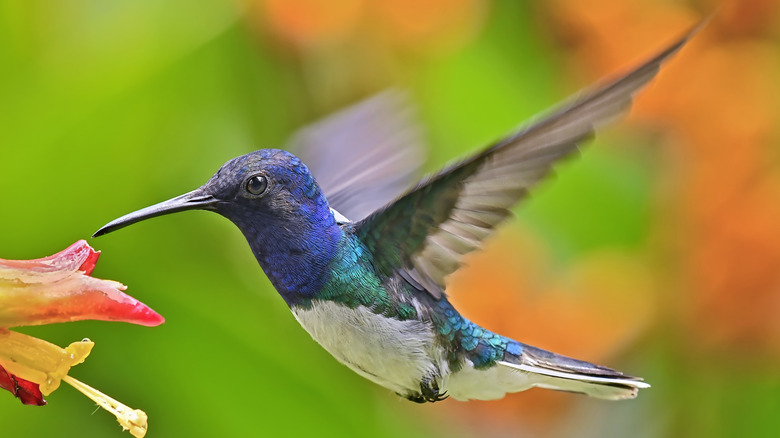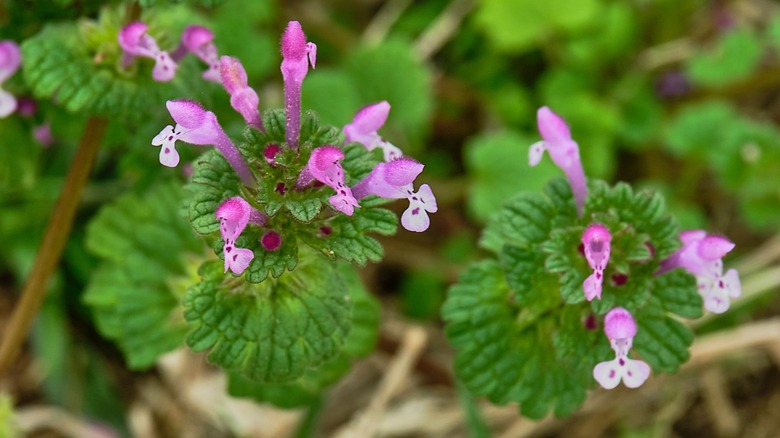The Hummingbird-Attracting Tubular Flower That's Actually A Weed
Hummingbirds are a glorious sight, whether you see them in your yard or out in the wild. Sadly, climate change and habitat pressure mean several species of these spectacular birds are under threat. Anything that helps provide them with food, whether that be garden feeders or one of the native plants that attract hummingbirds, is usually seen as a good thing... even if it is a weed.
There's one tubular flower that falls into this category, and although not strictly a native (it originated in Europe), it is now widespread across much of the US. It's commonly known as henbit (Lamium amplexicaule) because chickens like to eat it. It's also called deadnettle because it looks similar to that weed but has no sting.
Hummingbirds love the tubular purple flowers for their nectar. All parts that grow above ground are also edible. Some say it tastes a bit like celery, while others compare it to kale. It is actually part of the mint family, and as such is an herb. It has long been used for its medicinal properties. So, henbit has a bunch of benefits beyond feeding our feathered friends, but is it a good thing to have around or one of those fast-growing herbs you won't want in your garden? Let's take a closer look.
The pros and cons of growing henbit in your yard
On the plus side, henbit is packed with iron and vitamins A, C, and K. It can be added to salads or brewed as a tea. It is claimed to help break fevers, relieve rheumatic pain, and soothe inflammation. In the garden, as well as nectar for hummingbirds, it provides pollen for bees.
In parts of the southern U.S., the plant is valuable to help prevent soil erosion. However, it can become a problem in pastureland if not treated quickly, out-competing grasses. Problems can start because of the way henbit grows. It is an annual that sets seeds in the fall, overwinters, and then shoots up rapidly in the spring. This can impact farmland, and it can also sprout up all over lawns.
There is a host of beautiful flowering plants that are considered invasive species, and their growth may be restricted in some parts of the country. Henbit is not yet in that category, but its growth is discouraged by a number of organizations. In Texas, for example, it is considered invasive in turfgrass. If you choose to introduce henbit to your garden, it could be difficult to get rid of. It might be best left in the wild, and if you wanted to try its medicinal benefits, you could have a nice day out foraging for it rather than growing it at home.

